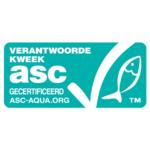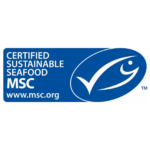Tub gurnard
North Sea and eastern Channel (FAO 27)
Scottish seining/flyshoot
- Jan
- Feb
- Mar
- Apr
- May
- Jun
- Jul
- Aug
- Sep
- Oct
- Nov
- Dec
The status of the stockStock:
The fish of a particular species reproducing in the same area in the same period. of tub gurnard in these areas is currently still unknown. This species seems sensitive to fishing pressureFishing pressure:
Fishing pressure is a result of the fishing effort/amount of fishing on a stock, which determines the fishing mortality. Fishing mortality is the share of the fish stock that dies annually as a result of fishing. and is probably vulnerable to overfishingOverfishing:
There is so much fish caught that the size of the stock has diminished so far that it can no longer produce a maximum sustainable yield. The size of the fish populations is insufficient to reproduce in the long term. . Commercial data show that the stock has remained well above the long-term average in recent years.
ScottishScottish seines:
A fishing technique whereby a net with a long line (the seagulls) is pulled through the water on both sides. The ship is slowly steaming forward when getting in. Also called flyshooting seines, or flyshoot, are likely to impact other species, including endangered and protectedProtected species:
Many marine species are protected from deliberate or intentional disturbance, capture, injury and killing, and in some cases possession or sale. Species are often protected if they play an important role in the ecosystem or are sensitive to fishing. These marine species are protected regardless of whether they are inside or outside marine protected areas. species. However, research shows that bycatchBycatch:
Species caught next to species targeted for fishery. By-catches can consist of non-commercial species and species that are too small, and can be kept (this part is sometimes called by-product) or thrown back into the sea (discards). of sharks and rays is less common than previously thought. Because this fishery largely targets data-poorData-poor:
Fish species for which no scientific information is yet available. Due to lack of information, these species are often not managed by EU catch advice. species, the impact of this fishery on other fish species in the ecosystem is still relatively unknown.
Tub gurnard is not regulated by catch limitsCatch limits:
The maximum amount of fish of a species caught per country, per year. and has limited monitoring. ManagementManagement:
The regulations surrounding fisheries and aquaculture that ensure that production is carried out within legal frameworks and that sustainability can be assured. of this species is not effective.
This assessment was made under the Knowledge Project VISwijzer and Flyshoot Fish, with the objective of gathering more information on data-poor fish species such as tub gurnard.




